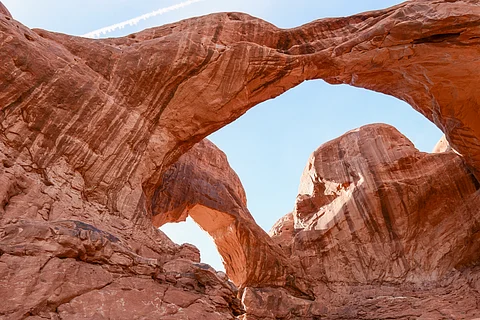
- Destinations
- Experiences
- Stay
- What's new
- Editor’s Picks
- Responsible Tourism
- CampaignsCampaigns
- Subscribe

The United States National Park Service rangers have confirmed the collapse of the “Double Arch,” a frequently visited area in Rock Creek Bay at Glen Canyon National Recreation Area, Utah. No injuries were reported as a result of the collapse, which occurred on August 8, 2024.
Labelled the “Toilet Bowl,” “Crescent Pool” and “Hole in the Roof,” the rock formation was a popular hiking destination. In 2023, over 5 million people visited the Glen Canyon National Recreation Area, which spans 1.25 million acres in Utah and Arizona.
The Double Arch was formed from 190-million-year-old Navajo sandstone originating in the late Triassic to early Jurassic periods. Since its formation, this fine-grained sand feature has been subject to spalling and erosion from weather, wind and rain. Changing water levels and erosion from wave action is suspected of contributing to the ultimate collapse of the arch.
Water levels in Lake Powell have fallen steadily since 1999 due to global heating that has made the western US hotter and drier, according to the National Aeronautics and Space Administration (NASA). Water levels rose this year after reaching historic lows in 2023 but have not fully rebounded to 1999, when the lake was near capacity.
Glen Canyon National Recreation Area superintendent Michelle Kerns said, “This event serves as a reminder of our responsibility and need to protect the mineral resources surrounding Lake Powell. These features have a life span that can be influenced or damaged by manmade interventions. While we don’t know what caused this collapse, we will continue to maintain our resource protection efforts on Lake Powell for future generations to enjoy. Please enjoy our resources but leave no trace.”
Arch-like rock formations can be seen elsewhere in America’s national parks. Arches National Park, which is located in southeastern Utah, has more than 2,000 natural stone arches. Bryce Canyon and Zion National Parks, also in Utah, boast many arches as well.
(With inputs from multiple news sources)
